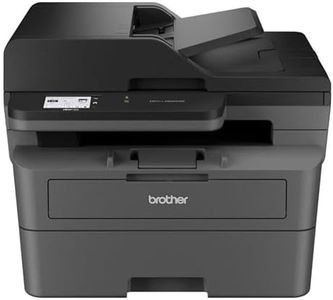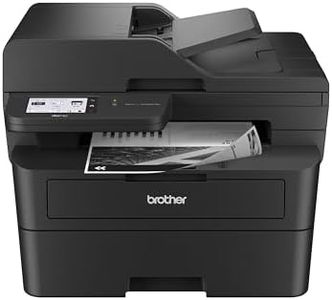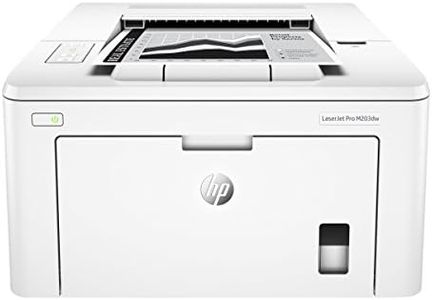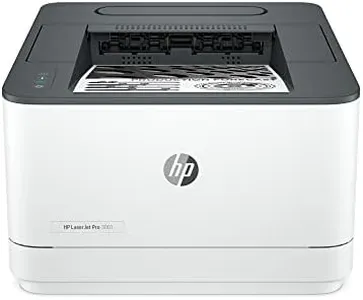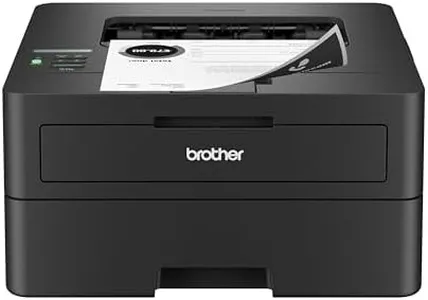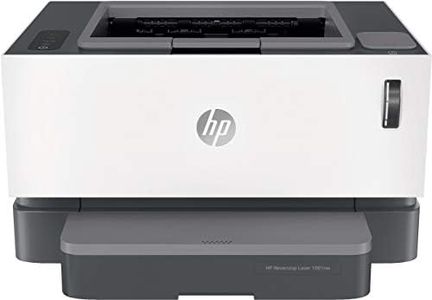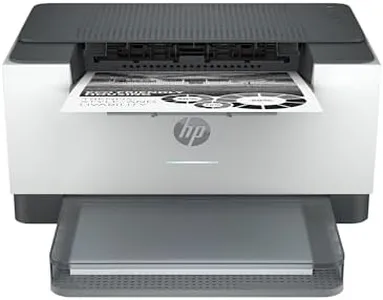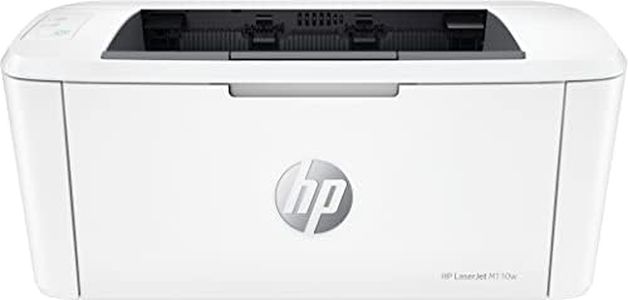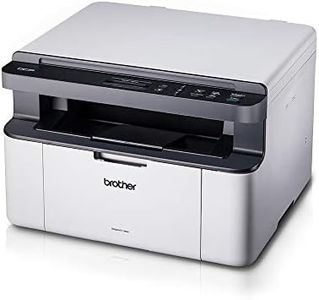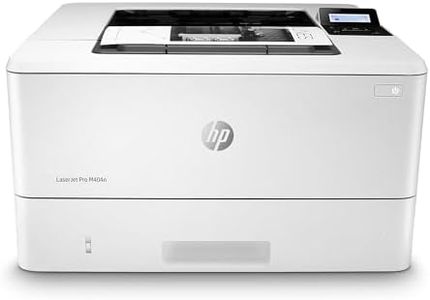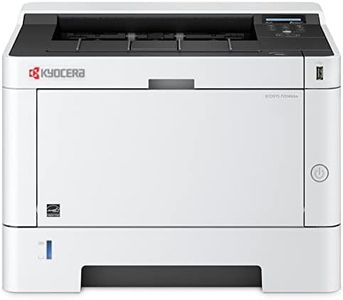We Use CookiesWe use cookies to enhance the security, performance,
functionality and for analytical and promotional activities. By continuing to browse this site you
are agreeing to our privacy policy
10 Best Black White Laser Printer
From leading brands and best sellers available on the web.Buying Guide for the Best Black White Laser Printer
When you're looking to buy a black-and-white laser printer, it's helpful to first identify what you’ll use it for most: home, office, studying, or maybe even a combination. Think about how many pages you typically print, how often you might need to print, and if you’ll need additional features like scanning or copying. Focusing on your main needs will help you cut through the marketing noise and make a choice that will serve you well over time.Print Speed (Pages Per Minute, PPM)Print speed tells you how many pages the printer can print in one minute. It's especially important if you often print large documents or have multiple people sharing one printer. Low print speeds, say under 20 PPM, are fine for occasional or personal use. Medium speeds of 20–35 PPM are typical for small offices or people who print regularly. High speeds, above 35 PPM, are great for busy offices where lots of printing happens every day. Think about your print habits—if you often wait for printouts, a faster speed could save you a lot of time.
Print Resolution (DPI)Resolution, measured in dots per inch (DPI), affects the sharpness and quality of your printed text and graphics. Basic printers offer around 600 x 600 DPI, which is enough for clear text but may be less crisp for detailed graphics. Models offering 1200 x 1200 DPI or higher produce sharper images, which can be helpful if you print charts or graphics in reports. For printing mostly text, standard resolution is fine, but choose a higher resolution if you want your prints to look extra sharp and professional.
Duty CycleDuty cycle refers to the maximum number of pages the printer is designed to handle per month without risking damage. Low duty cycles (a few thousand pages/month) suit home or occasional use, while higher ones (tens of thousands) work better for offices or heavy use. If you consistently print close to or above the duty cycle, the printer will wear out quickly. Match the duty cycle to your rough monthly print volume to ensure reliability and longevity.
Connectivity OptionsConnectivity describes how you can connect the printer to your devices. Most modern printers offer USB as standard, but you might want network connections like Ethernet or WiFi if you'll be printing from multiple computers, mobile devices, or want to print without plugging in cables. WiFi Direct and mobile printing support are handy for printing from phones or tablets. Consider what devices you'll use most, and make sure the printer’s connectivity fits your set-up.
Paper HandlingPaper handling covers how much paper the printer can hold and the sizes or types of paper it supports. Small printers might hold 150 sheets, making them suitable for low-volume use. Bigger trays with 250 sheets or more are better for frequent printers or groups. If you use special media—like envelopes or thick card—look for a manual feed slot or multi-purpose tray. Decide how often you want to reload paper and what types you'll use to choose the right capacity.
Toner Efficiency and Replacement CostToner efficiency relates to how many pages a toner cartridge can print before needing replacement and how easy or affordable replacements are. Standard capacity cartridges print less but cost less upfront, while high-yield cartridges cost more but last longer and generally give you a lower cost per page. If you print a lot, checking the cost and yield of replacement toners can save you money over time. Consider not just the printer’s price but the overall cost of ownership.
Duplex Printing (Automatic Two-Sided Printing)Duplex printing means the printer can print on both sides of the paper automatically. This is a great feature for saving paper and making professional-looking documents like booklets or reports. Some printers require you to turn the paper over manually. If you want convenience and efficiency, especially for double-sided documents, look for automatic duplex printing.
Size and Noise LevelSize is about how much space the printer will take up, which matters if you have a small desk or limited workspace. Noise level is about how loud the printer gets when operating, which can affect comfort in quiet settings. Compact, quieter models work well for home or shared spaces, while larger, louder ones are usually aimed at heavy-duty, busy environments. Think about your space and sensitivity to noise when choosing.
